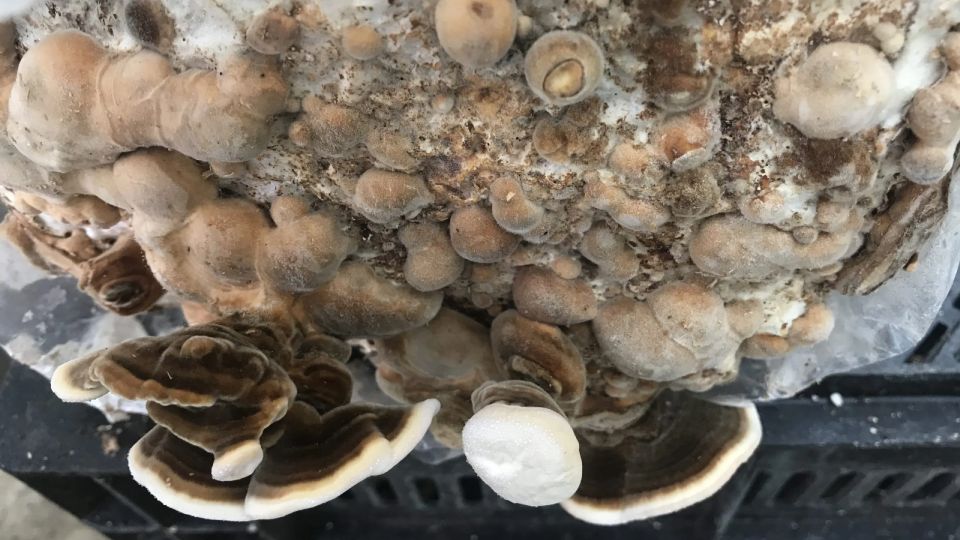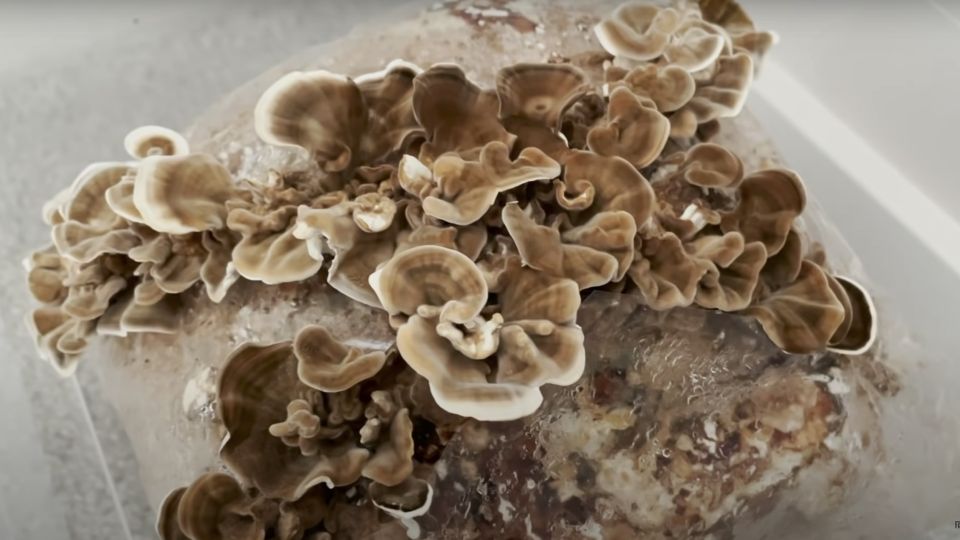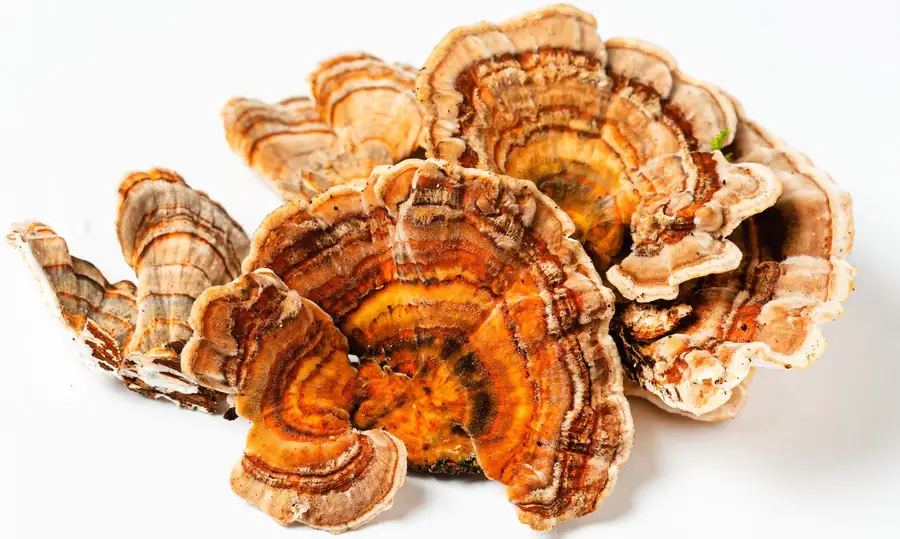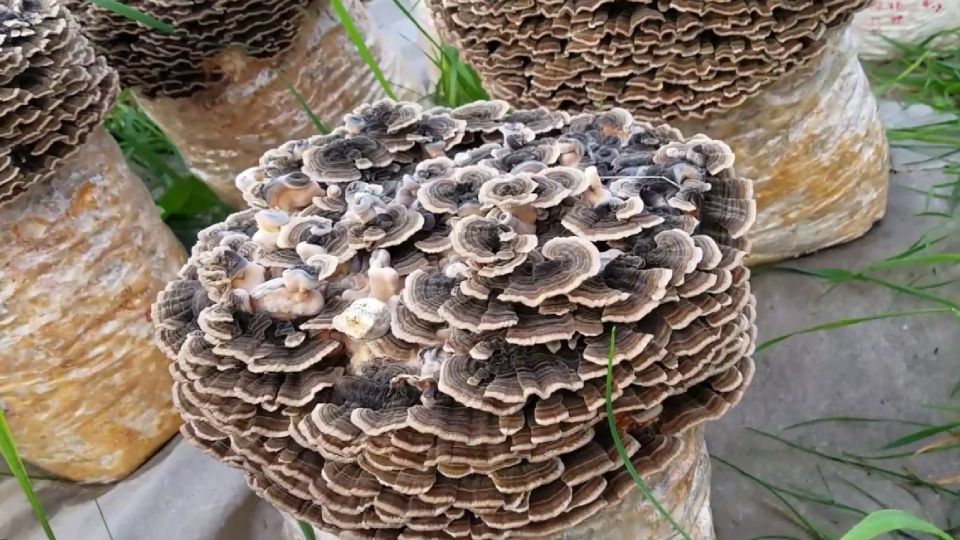How to Grow Turkey Tail Mushrooms: A Comprehensive Guide
Are you curious about how to grow turkey tail mushrooms at home? If so, you’ve come to the right place! We’d be delighted to share some valuable information with you. Turkey tail mushrooms, known for their deep flavor and culinary versatility, can be found all around the world. Apart from their culinary uses, these mushrooms have also been treasured in traditional medicine for their immune-boosting and infection-fighting properties. In this article, we’ll explore different methods of growing turkey tail mushrooms, providing you with the knowledge to cultivate these valuable ingredients yourself.
In this article:
What are Turkey Tail Mushrooms?
Before we delve into the process of how to grow turkey tail mushrooms, let’s take a moment to familiarize ourselves with this remarkable species. Turkey tail, scientifically known as Trametes versicolor, captivates with its vibrant and colorful appearance. These mushrooms boast concentric rings in various shades, resembling the splendid plumage of a wild turkey’s tail, which explains their name. Not only are they visually appealing, but they also harbor incredible medicinal benefits.
For centuries, traditional Chinese medicine and other ancient healing practices have held turkey tail mushrooms in high esteem. These mushrooms contain potent compounds, including polysaccharopeptides, which exhibit promising properties in bolstering your immune system and fighting cancer[1].
How to Grow Turkey Tail Mushrooms

Growing Methods
To cultivate turkey tail mushrooms, there are several methods you can choose from:
1. Growing with a Kit
One of the simplest ways to get started is by using a turkey tail mushroom grow kit. These kits provide you with all the necessary materials, including pre-inoculated substrate blocks. Follow the instructions provided, and within a few weeks, you’ll have your very own harvest of turkey tail mushrooms.
2. Growing with Sawdust
Another popular method involves using sawdust as the growing medium. Begin by sterilizing the hardwood sawdust to eliminate any competing organisms. Mix the sawdust with turkey tail mushroom spawn, which contains the mycelium—the vegetative part of the fungus. Pack the mixture into plastic bags, poke some holes for airflow, and incubate the bags in a warm and dark area. In due time, the mycelium will colonize the sawdust, and mushrooms will start to form.
3. Growing with Plug Spawn
For those interested in cultivating turkey tail on logs, a plug spawn is an excellent option. Drill holes into freshly cut hardwood logs, insert the plug spawn, and seal them with wax. Place the logs in a shaded and moist area, and over time, the mycelium will spread throughout the logs, eventually giving rise to beautiful turkey tail mushrooms.
Required Materials When Growing Turkey Tail
To successfully grow turkey tail mushrooms, you’ll need a few essential materials:
- Hardwood sawdust: This serves as the substrate for the mushrooms to grow on.
- Logs: If you prefer the log cultivation method, hardwood logs are necessary.
- Spray bottle: Use this to mist the growing environment and maintain the required humidity levels.
- Turkey tail mushroom spawns, or plug spawns: Contain the mycelium needed to start the growth process.
Optimal Growing Conditions
Creating the ideal growing conditions is crucial for a successful turkey tail mushroom harvest. Here are the key factors to consider:
Temperature
The temperatures needed to grow turkey tail mushrooms range from 55°F to 75°F (13°C to 24°C). Keep the environment within this range to support optimal growth.
Humidity
Maintaining proper humidity levels is essential. Turkey tail prefer a relative humidity of around 80%. Use a spray bottle to mist the growing area regularly and ensure the substrate remains moist but not waterlogged.
Light
While these mushrooms don’t require direct sunlight, they benefit from indirect light. Place them in a well-lit area, such as near a window, where they can receive filtered natural light.
Growing Turkey Tail Mushrooms at Home
Growing turkey tail at home can be a challenge, but with careful planning and attention to detail, you can create an ideal growing environment. Make sure the growing space is clean and well-ventilated to promote healthy mushroom growth.
Here is a step-by-step guide:

Materials:
- Turkey tail mushroom spawn or kit
- Growing medium (sawdust, straw, or hardwood logs)
- Large pot or pressure cooker
- Spray bottle
- Plastic bags or containers
- Humidifier (optional)
Steps:
1. Sterilize the growing medium.
Depending on the type of growing medium you choose, you will need to sterilize it to kill off any bacteria or fungi that could compete with the turkey tail mushrooms. For sawdust or straw, boil it for 30 minutes. For hardwood logs, soak them in water for 24 hours and then bake them in the oven at 250°F (121°C) for 4 hours.
2. Inoculate the growing medium.
Once the growing medium has cooled, add the turkey tail mushroom spawn or kit. If using a kit, simply cut open the bag and add the spawn to the growing medium. If using spawn, mix it evenly into the growing medium.
3. Pack the growing medium.
Pack the growing medium into plastic bags or containers, leaving some space for the mushrooms to grow. Poke small holes in the bags or containers to allow for air circulation.
4. Incubate the bags or containers.
Place the bags or containers in a warm, dark, and humid place. The ideal temperature is between 65-75°F (18-24°C) and the humidity should be around 80%. You can use a humidifier to maintain the humidity level.
5. Wait for the mushrooms to grow.
Turkey tail mushrooms are slow-growing and can take 1-2 months to fully fruit. During this time, mist the bags or containers with a spray bottle to keep them moist.
Harvesting and Storage
Once your turkey tail mushrooms have fully matured, it’s time to harvest and store them properly to preserve their medicinal properties. Follow these steps:
- Use a sharp knife or scissors to cut the mushrooms at the base of the stem.
- Handle the mushrooms gently to avoid damaging them.
- Store the freshly harvested mushrooms in a paper bag or a loosely sealed container in the refrigerator.
- Consume them within a week to enjoy their maximum freshness and benefits.
NOTE
After you harvest turkey tail mushrooms, you will need to dry them out and grind them into a powder yourself before you can use them. Dry them as soon as possible to prevent mold from developing. You can use a food dehydrator set to around 115°F (46°C). It takes about 24 hours to fully dehydrate an average-sized turkey tail mushroom. Then crush the dried mushrooms into a powder using a food processor or mortar and pestle.
Health Benefits of Turkey Tail

Now that you’ve learned how to grow Turkey Tail mushrooms, it’s time to delve into their amazing health benefits. Explore how these extraordinary fungi can improve your well-being and unleash your healing potential.
Immune-Boosting Properties
Research has shown that turkey tail mushrooms contain polysaccharides, which can enhance the activity of natural killer cells and other immune cells. By strengthening the immune system, these mushrooms help protect against infections and promote overall well-being[2].
Potential Use in Cancer Treatment
The powerful compounds found in these mushrooms have garnered attention for their potential anti-cancer properties. Studies have demonstrated that they may aid in cancer treatment by boosting the immune response, inhibiting tumor growth, and reducing the side effects of chemotherapy[3].
Gut Health Support
These mushrooms contain prebiotics, which serve as food for beneficial gut bacteria. By promoting the growth of these healthy microorganisms, turkey tail contribute to a balanced gut microbiome, supporting digestive health and overall immune function[4].
Antioxidant Activity
Antioxidants play a vital role in neutralizing harmful free radicals in the body, thereby reducing oxidative stress and preventing cellular damage. They are rich in antioxidants, making them a valuable ally in maintaining overall health[5].
Blood Sugar Regulation
Preliminary studies suggest that turkey tail mushrooms may help regulate blood sugar levels. The compounds present in these mushrooms can potentially improve insulin sensitivity and glucose metabolism, making them a promising natural option for individuals with diabetes or those at risk[6].
Safety and Precautions
Growing and consuming turkey tail doesn’t have to be complicated. Here are some helpful tips to remember when you embark on the journey of cultivating and enjoying these mushrooms:
1. Growing Turkey Tail Mushrooms
- If you’re new to growing these mushrooms, the easiest way to start is by buying a kit. It simplifies the process and gets you started quickly.
- To store the mushrooms, use an airtight container and keep them in a cool, dry place away from direct sunlight. If you have dried or powdered them, they can be stored indefinitely as long as you use an airtight container and keep them in a cool, dark place.
2. Consuming Turkey Tail Mushrooms
- Generally, Turkey tail mushrooms are safe to consume and don’t have any known poisonous lookalikes, which makes them relatively low-risk. However, it’s important to exercise caution when foraging for wild mushrooms. Never eat a wild mushroom unless you’re 100% certain it’s safe.
- If you’ve harvested your mushrooms, it’s a good idea to dry any mushrooms you won’t use immediately. Drying helps prevent spoilage and the development of mold.
BOTTOM LINE
It’s important to be cautious when growing and consuming them. Before eating them, inspect the mushrooms for any signs of insects, mold, or other issues. When foraging for wild mushrooms, always be careful and never eat a wild mushroom unless you’re certain it’s safe.
FAQs
Can I Grow Turkey Tail Mushrooms at Home?
Yes, you can grow Turkey Tail mushrooms at home. You’ll need a kit or spores, a suitable growing medium like logs or straw, and a shady spot. Follow instructions carefully, keep things moist, and within a few months, you’ll have your own Turkey Tail mushrooms for culinary or medicinal use.
How Long Does it Take to Grow Turkey Tail Mushrooms?
The time it takes to grow turkey tail mushrooms can vary, but on average, it takes about 6 to 12 months from the initial inoculation to harvest. Patience is key, as these mushrooms require some time to develop fully and reach their optimal growth stage.
What Conditions Do Turkey Tail Mushrooms Need to Grow?
The growing conditions for Turkey tail mushrooms are a cool and shaded environment with consistent moisture levels. They typically grow on decaying logs or wood, so providing a substrate that mimics these conditions, along with proper ventilation, will encourage their growth.
Do Turkey Tail Mushrooms Grow in Winter?
Yes, you can grow turkey tail mushrooms in winter. They are resilient and can withstand colder temperatures. However, their growth might slow down during the winter due to the reduced availability of sunlight and lower overall temperatures.
Conclusion: How to Grow Turkey Tail Mushrooms
Growing turkey tail mushrooms can pose some challenges, but with careful planning and attention to detail, you can create an ideal environment for their cultivation. One way to simplify the process is by using a mushroom kit that provides everything you need. Alternatively, you can insert mushroom mycelium-plugged dowels into conifer or pine logs, which will yield mushrooms within six months to a year. Turkey tail mushrooms contain polysaccharopeptide (PSP) and polysaccharide-K (PSK), known for their potential benefits when used alongside treatments like chemotherapy[7]. Moreover, a study has revealed the powerful immune-boosting properties of both the mycelium and fermented substrate of Trametes versicolor (Turkey tail) mushrooms.
References
1. Quorum sensing molecule-farnesol increased the production and biological activities of extracellular polysaccharide from Trametes versicolor. Retrieved from https://www.sciencedirect.com/science/article/abs/pii/S0141813017317671
2. The mycelium of the Trametes versicolor (Turkey tail) mushroom and its fermented substrate each show potent and complementary immune activating properties in vitro. Retrieved from https://www.ncbi.nlm.nih.gov/pmc/articles/PMC6889544/
3. Polysaccharide-Peptide from Trametes versicolor: The Potential Medicine for Colorectal Cancer Treatment. Retrieved from https://www.researchgate.net/publication/365238685_Polysaccharide-Peptide_from_Trametes_versicolor_The_Potential_Medicine_for_Colorectal_Cancer_Treatment
4. Trametes versicolor extract modifies human fecal microbiota composition in vitro. Retrieved from https://pubmed.ncbi.nlm.nih.gov/23435630/
5. Effects of UV Stress in Promoting Antioxidant Activities in Fungal Species Trametes versicolor (L.) Lloyd and Flammulina velutipes (Curtis) Singer,. Retrieved from https://www.researchgate.net/publication/367500234_Effects_of_UV_Stress_in_Promoting_Antioxidant_Activities_in_Fungal_Species_Trametes_versicolor_L_Lloyd_and_Flammulina_velutipes_Curtis_Singer
6. Anti-diabetic Effect of Methanol Extract of Trametes versicolor on Male Mice. Retrieved from https://www.researchgate.net/publication/316512004_Anti-diabetic_effect_of_methanol_extract_of_Trametes_versicolor_on_male_mice?_sg=EnfbcYjjs3zFMxlBxBYDc8vZ90wLO-UrmlyoGYX7p4vDApEUvCNDS6vR0-ynU-VfNQPpl6L9tQte6Fc
7. Coriolus (Trametes) versicolor mushroom to reduce adverse effects from chemotherapy or radiotherapy in people with colorectal cancer. Retrieved from https://www.researchgate.net/publication/365843743_Coriolus_Trametes_versicolor_mushroom_to_reduce_adverse_effects_from_chemotherapy_or_radiotherapy_in_people_with_colorectal_cancer

